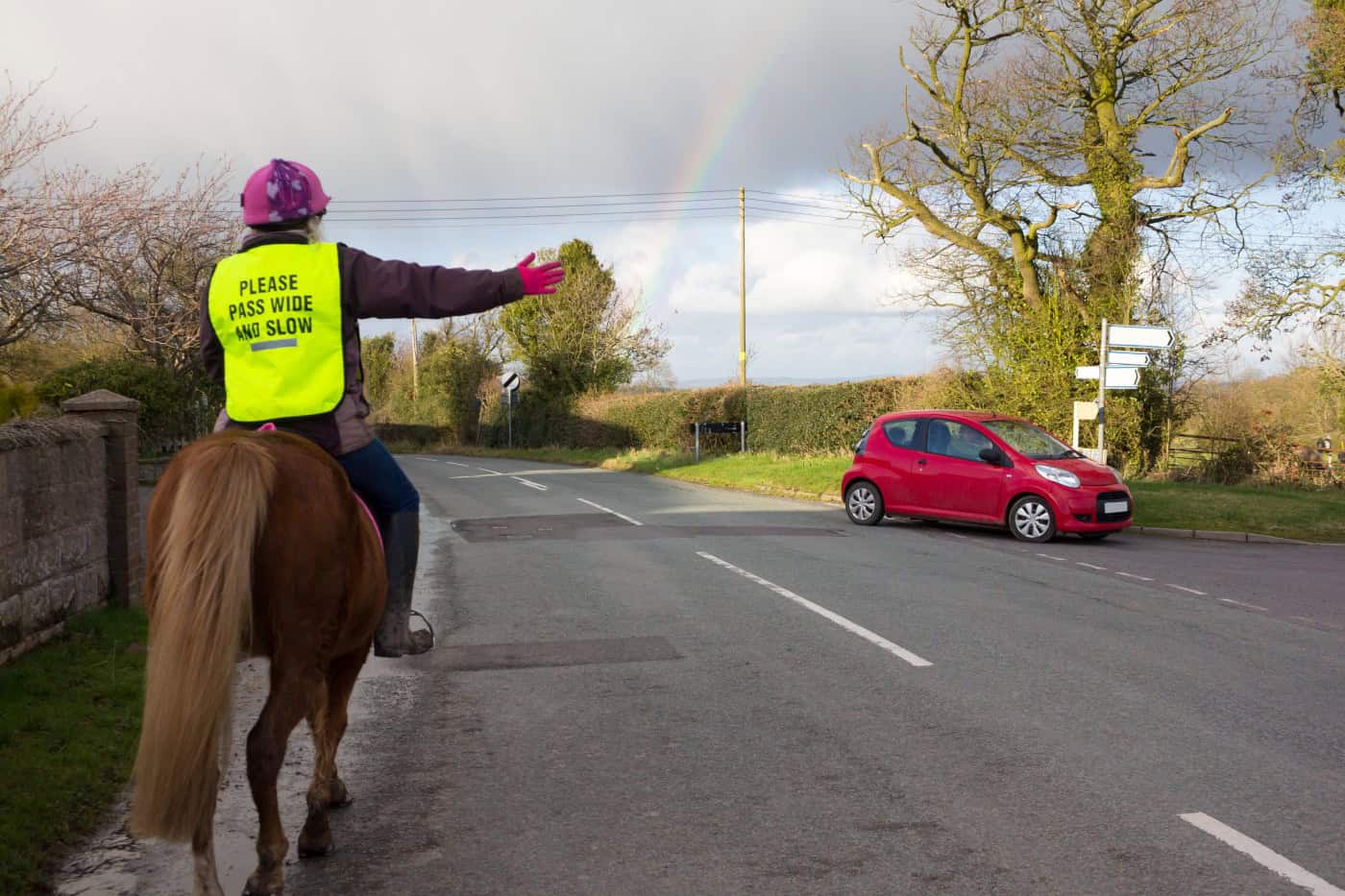
Changes to the Highway Code to protect horse riders on the road
Two horses have died and their riders seriously injured after a road collision in Essex on 07 January 2022. The dangers faced by horse riders as some of our most vulnerable road users has once again been highlighted.
The Statistics
In 2020 nearly 1,000 road incidents were reported to the British Horse Society (BHS). 46 horses were killed, 118 horses injured and 130 riders injured. 80% of those incidents took place because the driver was passing too fast, or too close to the horse. This is only the tip of the iceberg as only 1 in 10 riders actually report these road incidents to the BHS.
Equestrians and their horses are being subjected to “shocking” levels of stress and risk according to a new study that was funded by the Department for Transport (DfT) and commissioned by The British Horse Society (BHS) (https://www.bhs.org.uk/~/media/documents/safety/2021/the-horse-incident-reporting-awareness-study-2021.ashx?la=en)
The study involved four elements of research: a review of existing DfT and BHS data, a survey among 6,000 equestrians from 2020 looking at how frequently equestrians used roads and off-road routes, focus groups and interviews, and a second survey in the summer of 2021, which generated 7,124 responses.
The survey, involving over 7,000 participants, revealed that:
- Only 3% of equestrians said they never felt stressed or anxious when using roads, while 43% did so more than half the time;
- 78% of equestrians said they had experienced an incident while using roads with their horse, the majority experiencing more than 10 that they did not officially report, with only 31% having previously reported to the police and/or the BHS;
- Meanwhile 322 equestrians, 4.5% percent, said they had been involved in a road incident in the previous year that resulted in injury to either a person or an animal. The majority of these incidents, 59%, occurred when they were riding or handling a horse;
- 60% felt that having to use or cross certain roads limited their ability to exercise with their horses and between 60% and 70% thought they would exercise their horses more frequently and cover greater distances if they felt safer when using roads.
What do the statistics identify?
It was considered from these statistics that horse riders need more innovation around safety, an increase in the use of cameras, and improvements to highways’ and motoring policies like reduced speed limits, warning signs, more non-slip road surfaces and Highway Code amendments.
Ultimately what is also needed is behavioural change from anyone currently using the roads who is not following best practice around safety and consideration for other road users.
Changes to the Highway Code
An updated version of the Highway Code which is welcomed by horse riders is due to go into effect from 29 January 2022. The changes establish a new hierarchy of road users to provide better protection to vulnerable road users such as horse riders and a new set of rules around priority at junctions.
According to the government, Rule H1, which creates a new hierarchy of road users, “ensures that those road users who can do the greatest harm have the greatest responsibility to reduce the danger or threat they may pose to other road users.”
The objective of the hierarchy is not to give priority to pedestrians, cyclists and horse riders in every situation, it insists, but rather “to ensure a more mutually respectful and considerate culture of safe and effective road use that benefits all users.”
For that reason, Rule H3 explicitly states that drivers “should not cut across cyclists, horse riders or horse drawn vehicles going ahead when turning into or out of a junction or changing direction or lane, just as you would not turn across the path of another motor vehicle.”
Guidance on passing distances
Something that many horse riders have had difficulty with is motorists not passing horses at a safe distance on the road. The wording of rules regarding passing distances has been amended and now includes guidelines for overtaking pedestrians, cyclists and horses. It now advises motorists to:
- Pass horses and horse-drawn vehicles at speeds under 10mph and at a minimum distance of two metres;
- Wait behind the motorcyclist, cyclist, horse rider, horse drawn vehicle or pedestrian and not overtake if it is unsafe or not possible to meet these clearances.
Leaving plenty of space when overtaking should be fairly obvious but the rule changes add much-needed clarity.
Other rule changes
Some of the other rule changes that’ll directly affect horse riders are:
- Drivers should take extra care and give more space when passing horse riders, horse-drawn vehicles, motorcyclists, cyclists or pedestrians in bad weather (including high winds) or at night;
- Drivers should not cut across horse riders, horse-drawn vehicles or cyclists when turning into or out of a junction, or changing direction or lane, just as you wouldn’t cut across another motor vehicle.
Response to the changes
Horse riders are pleased with the new proposals. The BHS’s director of safety, Alan Hiscox said “I was dancing a little jig when I read them! People ask whether the DfT really listens to equestrians or considers us in the same way as cyclists, and I think this absolutely proves they do. I really think this will be a major step for the safety of horses on the roads.”
However, there are also opinions that the new rule changes won’t be enough to make a real difference as they are advisory and not backed up by law. Neil Greig, Policy director at IAM Roadsmart, said: “Informing every road user in the UK about the new rules will be a huge task, particularly when most drivers think they’re competent and don’t need to refresh their skills. Vulnerable road users deserve the highest protection from motorised vehicles but simply changing a book no one reads is unlikely to deliver the impact hoped for.”
It is clear that whilst these changes are welcomed there is still a long way to go to make our roads safer for our most vulnerable road users.
What you can do
Whilst the changes to the Highway Code are a start there is clearly more that can be done to keep horse riders safe when riding on the road. The more information available to those seeking further change the better.
If you are a horse rider using the roads then hopefully the changes to the Highway Code will in time start to have a positive impact on the behaviour you experience from other road users. If you do encounter a road traffic accident involving you and your horse then you can report it to the BHS by following this link: https://www.bhs.org.uk/our-work/safety/report-an-incident.
If you are injured in a road traffic collision as a horse rider and want to pursue a claim against another road use then Bolt Burdon Kemp can help. We are personal injury solicitors that specialise in assisting vulnerable road users such as horse riders in claiming compensation for injuries and losses arising from road traffic collisions.










